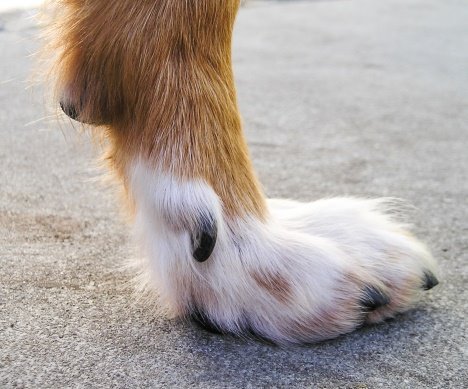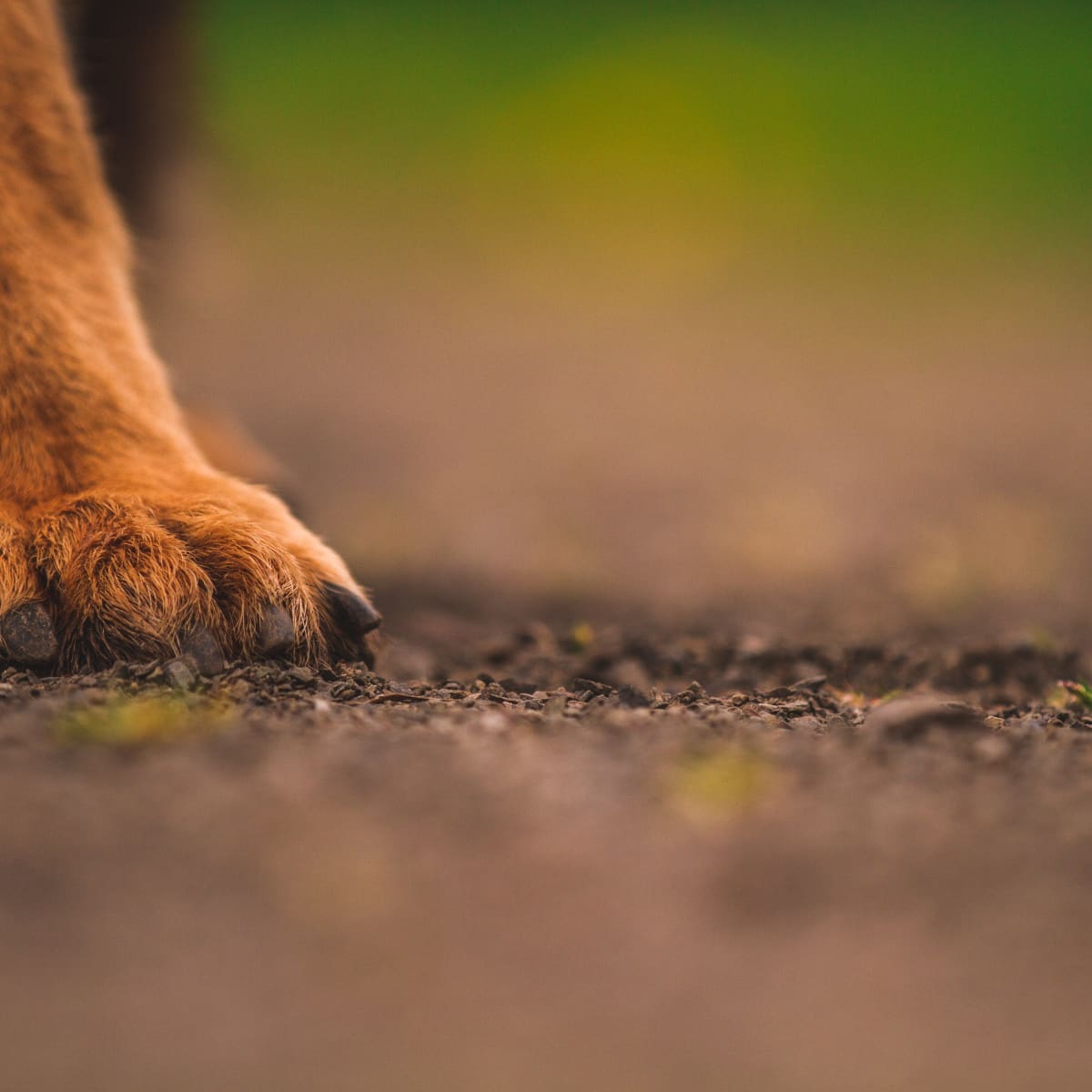
Almost all dogs naturally have dew claws on their front. Labradors and most dog breeds tend to have dewclaws on their front legs and on rare occasions on the rare legs too it is similar to a thumb with a nail that is a bit above the paw.

Unlike front dewclaws rear dewclaws tend to have little bone or muscle structure in most breeds.
Dogs with dew claws on hind legs. The Pyrenean mountain dog usually has one pair of hind leg dewclaws but two sets of hind dewclaws is not uncommon. The Beauceron is another large French dog breed that historically fulfilled a number of livestock guarding and herding roles and which again has a double set of hind limb dewclaws. The Beaucerons rear dewclaws tend to be quite low.
What dog breeds have dew claws on hind legs. The dog breed standard states that the Beauceron breed must have double rear dewclaws to qualify for show competitions. The Pyrenean shepherd briard and Spanish mastiff are other breeds that have breed standards that include the rear double dewclaw.
Why Do Great Pyrenees have double dew claws. What breed of dogs have double dew claws on hind legs. The Norwegian Lundehund dog is extra special as it is not only expected to have double-dewclaws on its rear paws but also six toes on its front paws too.
Dewclaws are the small digits slightly higher up a dogs leg than their other toes. They are similar to human thumbs. All dogs are born with front dewclaws and some have hind dewclaws too.
Hind dewclaws tend to be less well attached and floppier than front dewclaws so they are more likely to get damaged. While having a dewclaw on the front legs is normal for all dogs those that also have dewclaws on the hind legs are rare. The term double dewclaw refers to those extra digits on the hind legs.
Actually theyre not exactly digits theyre more of a genetic anomaly in most cases. The Iceland Sheepdog is required to have at least one dewclaw on both of the hind legs. However it is not uncommon to find an Iceland Sheepdog with double dewclaws on both hind feet.
In some rare cases you can get puppies with 3 sets of double claws on both hind feet and one front foot or even one with double claws on all fours. Another ancient breed with double dewclaws on the hind legs is the Anatolian Shepherd. These big dogs are another breed that gets along well with children and they also love other animals.
The Anatolian Shepherd is a very loyal and defensive dog with a low prey drive. In some dogs they are loose and floppy in others they are firmly attached. Some breeds have in their breed standard explicit reference to dew clawson their hind legs.
They are MEANT to have them. Fewer and fewer vets will remove dew claws as a matter of course now since the docking ban and so more dogs appear with them than before. Which Dog Breeds Have Dewclaws On Their Hind Legs.
The Pyrenean mountain dog. Dewclaws are only abnormal when they appear on the hind legs. Exceptions are breeds like the Pyrenean Mountain Dog or Briard where hind dewclaws are part of the breed standard.
For the rest my guess is that less that one percent have. What is a Dewclaw. If you look at your dogs front legs youll notice an extra claw.
This claw known as the dewclaw is a claw that doesnt touch the ground when your dog walks or runs its a little like the thumb of your dogs paw disconnected from the other fingers. It is dewclaws uncommonly found on the hind legs of some dogs. In certain breeds such as Great Pyrenees Beaucerons and Briards double dewclaws must be present for standard reasons.
Some argue that the dogs dewclaws should. Dog dewclaws sometimes appear on a pups hind legs. When we talk about dog dewclaws though most people are probably thinking about the floppy useless thing with a little claw on a dogs.
The dewclaw is the thumb. The same is true for the canine hind foot with the dewclaw being the big toe. An important distinction to make is whether or not the dewclaws are firmly attached to a dogs foot.
In general if your dog has a single front dewclaw it will be. Dewclaws in the hind legs. The hind legs may also have dewclaws but they are present only rarely and not in all German shepherd breeds.
Their functionality is also not up to the level as that of the front leg dewclaws. In fact unlike the front leg dewclaws the dewclaws in the hind leg are merely attached by a skin flap and tissues. It depends on the dog.
Some have them on the back some have them on the front some like my Tibetan terrier have four dewclaws two on the front two on the hind. Some have two dewclaws in both front feet. Here is a dewclaw circled.
The lines indicate where the 4 primary nails are. The dew claw is the claw that most dogs have on the inner portion of their lower leg little ways above the rest of the paw. Almost all dogs naturally have dew claws on their front.
Most dog professionals agree that removing dew claws from the hind legs is the right thing to do. Their purpose is rather unclear and they are far more prone to. Dogs almost always have dewclaws on the inside of the front legs and occasionally also on the hind legs.
Unlike front dewclaws rear dewclaws tend to have little bone or muscle structure in most breeds. At least one of these dewclaws will be poorly connected to the leg and in this case it is often surgically removed. Labradors and most dog breeds tend to have dewclaws on their front legs and on rare occasions on the rare legs too it is similar to a thumb with a nail that is a bit above the paw.
Typically a dewclaw that is bone-attached to a labradors front legs serves a specific function. When dogs run their front legs often bend to such a degree that their dew claws come into contact with the ground. Dew claws provide extra support to the carpal wrist joint when a dog is running or making sharp turns at high speed.